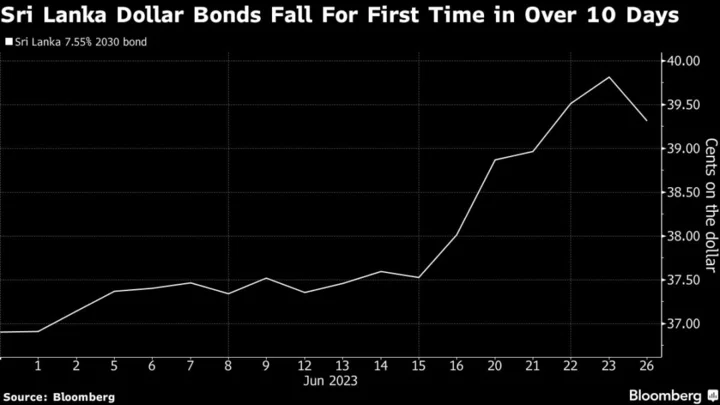Cash-strapped Sri Lanka will announce its domestic debt restructuring strategy this week, in a crucial step toward striking a deal with the island nation’s creditors.
The plan will be announced soon, central bank Governor Nandalal Weerasinghe told reporters late Sunday, adding that the South Asian nation has declared a five-day closure of financial markets from Thursday, to give sufficient time for the blueprint to get approval from cabinet and parliament.
Sri Lanka needs to complete the restructuring ahead of the International Monetary Fund’s first program review of its $3 billion bailout in September. A right balance between the demands of domestic institutions, foreign bondholders, and bilateral creditors will be key to reaching debt sustainability as envisaged by the Washington-based lender. It will also help the nation’s economy recover from a crisis that saw it default on debt last year amid dwindling reserves.
The Sri Lankan rupee was little changed, while the 7.55% 2030 bond was indicated slipping 0.7 cents to 38.5 cents on the dollar, snapping six days of gains. Analysts are watching closely on how much domestic debt will be restructured.
“A credible domestic debt restructuring will pave the way for a faster agreement with the external stakeholders as well,” said Saurav Anand, an economist at Standard Chartered Plc in Mumbai, “The key would be who will get impacted and by how much.”
Overseas investors are demanding that domestic bond holders share billions of dollars of losses, but the government’s proposal for a voluntary restructuring of its rupee-denominated bonds had found few takers. Some of the nation’s biggest lenders including Commercial Bank of Ceylon Plc. and Hatton National Bank Plc have warned that a local debt restructuring will lead to capital impairment.
The plan wouldn’t hurt deposit values and ensure financial system stability, Weerasinghe said, allaying fears of the move crippling the country’s banking system.
Sri Lanka’s external borrowings totaled $41 billion, while its local currency debt stood at around $38 billion in 2022, according to the IMF. Talks with foreign creditors to restructure external debt are still on.
“We are more or less looking at maturity extensions rather than anything else,” said Dimantha Matthew, head of research at First Capital Holdings PLC in Colombo, “Once the domestic debt optimization gets implemented we expect yields to drastically decline.”
The domestic debt restructuring plan will likely be discussed by the parliament’s committee on public finance on June 29 and 30, and be debated by the legislature over the weekend, according to opposition lawmaker Harsha de Silva.
--With assistance from Karl Lester M. Yap.

